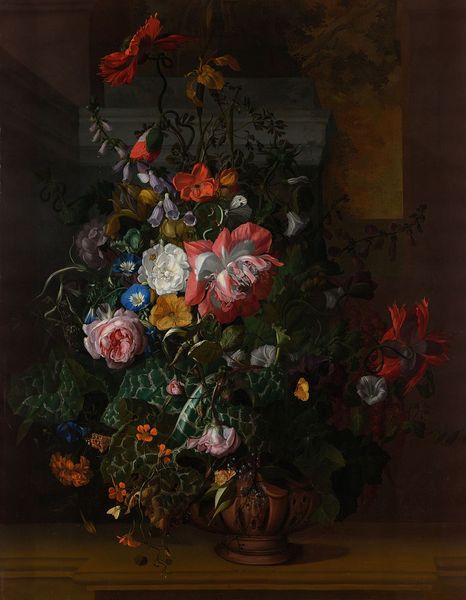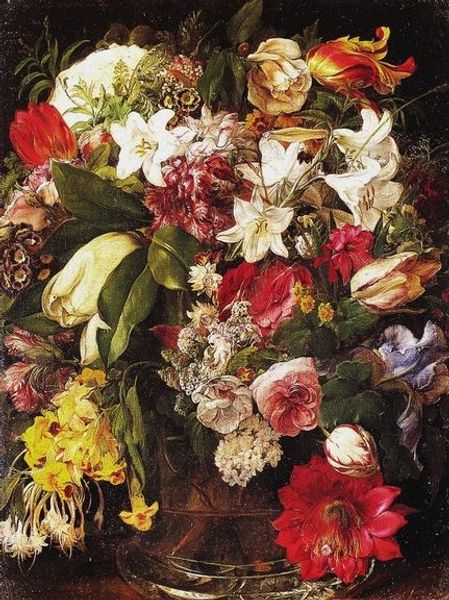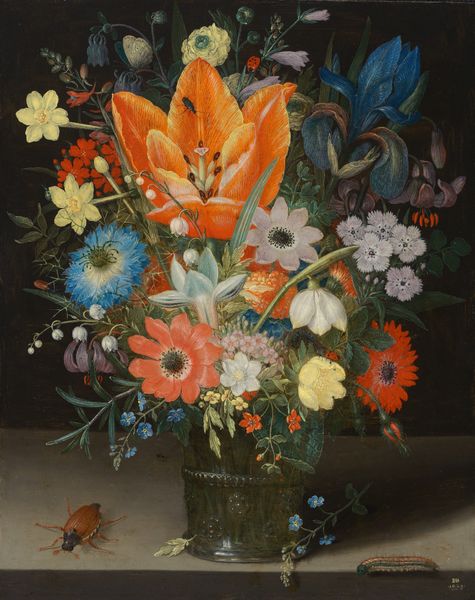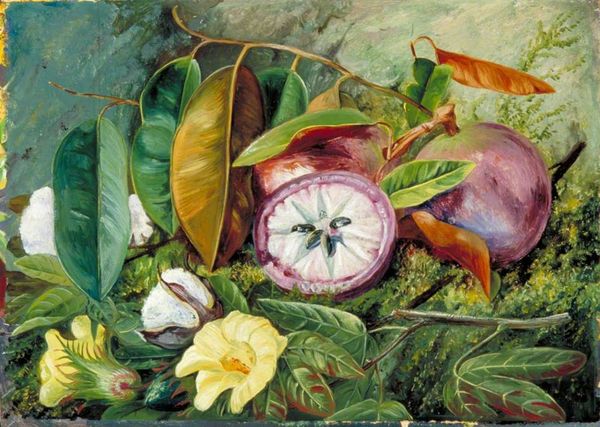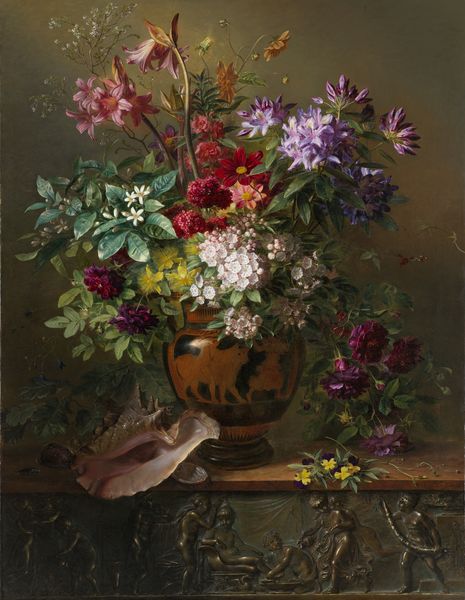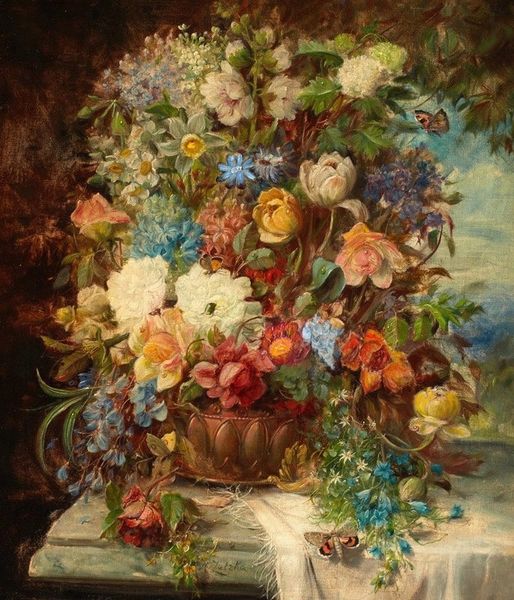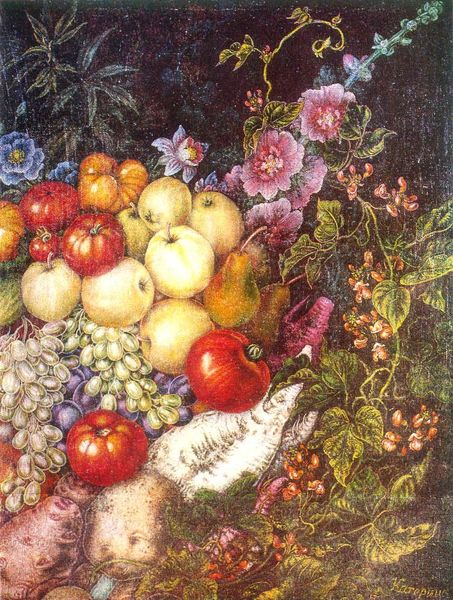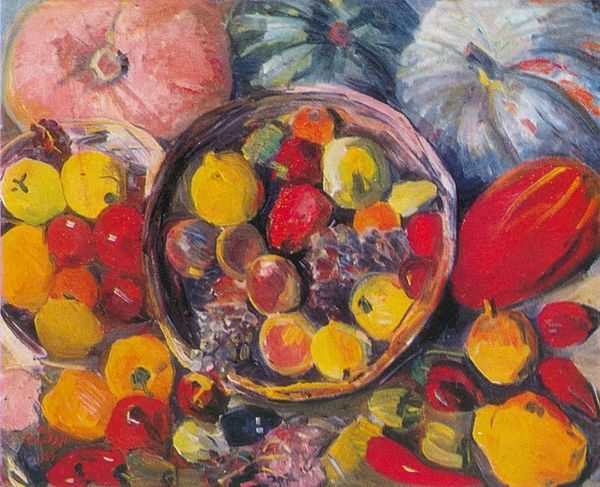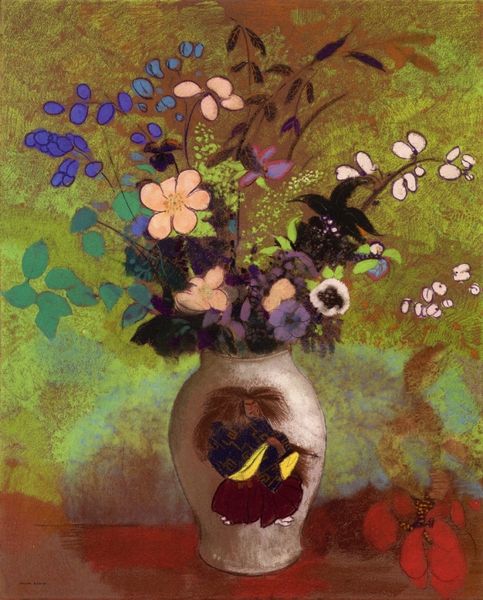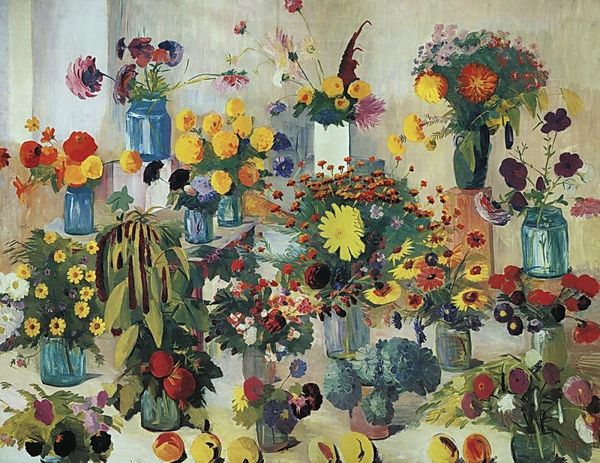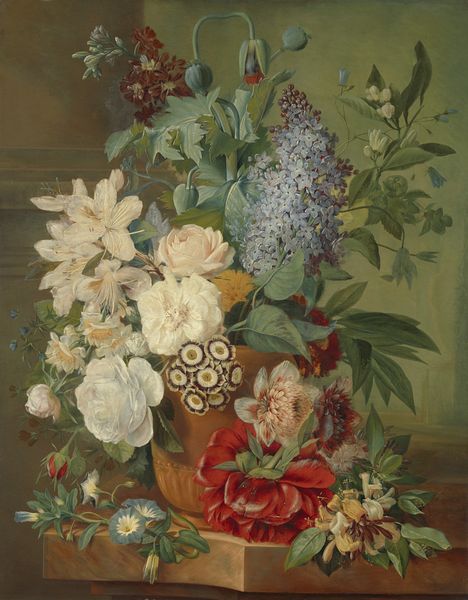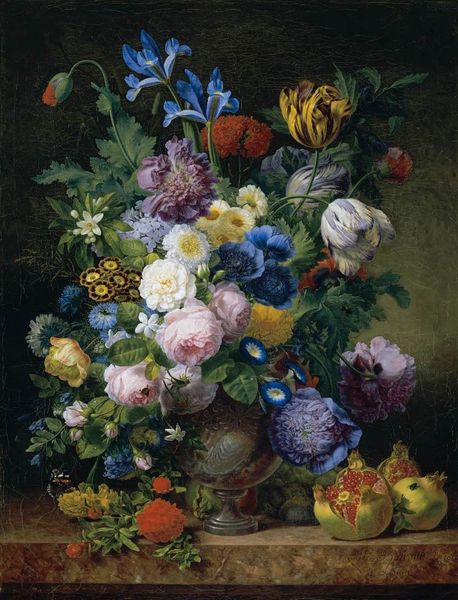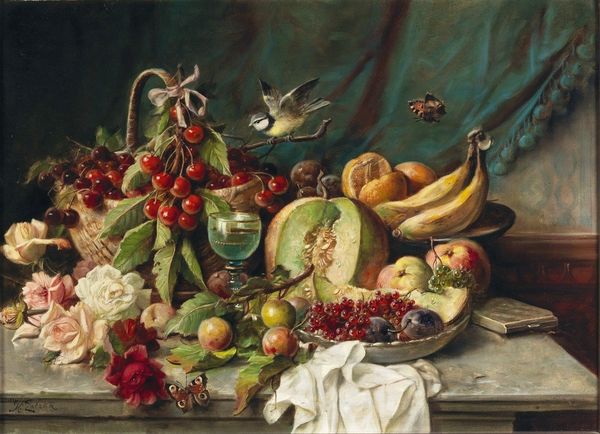
painting, oil-paint
#
painting
#
oil-paint
#
flower
#
oil painting
#
plant
#
realism
Copyright: Public domain
Editor: Here we have Konstantin Makovsky's "Flowers 1," painted in 1884. The riot of colors and textures is astonishing! It feels like the height of summer abundance, almost overwhelming in its variety. How do you interpret this work? Curator: This still life presents an interesting lens through which we can examine societal values prevalent at the time. Consider the explosion of botanical studies in the 19th century; plant collecting and elaborate floral arrangements became symbols of status and cultural capital. Doesn’t this abundance also remind you of the rapidly growing market economy and consumerism? Editor: That’s a connection I hadn't considered. I was just struck by the beauty of the sunflowers, poppies and squash together. Do you think Makovsky was making a specific comment on that culture of consumerism? Curator: Possibly. Note the contrast: wild and cultivated, useful and ornamental all vying for space. Makovsky's hyper-realistic technique also begs the question: Is he simply representing nature, or is he arranging and controlling it, just like society was arranging and controlling access to capital? Does he critique the societal emphasis on visual pleasure over true substance? Editor: It's fascinating how a seemingly simple floral arrangement can reveal layers of social and political meaning. I’ll never look at a bouquet the same way again. Curator: Exactly! Considering art in its historical and societal contexts enables it to speak to the modern viewer with urgency and relevance. The simple bouquet turns into a vibrant reflection on commodification and cultural aspiration!
Comments
No comments
Be the first to comment and join the conversation on the ultimate creative platform.
